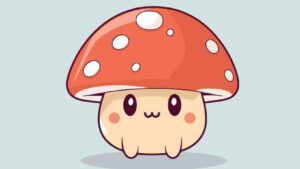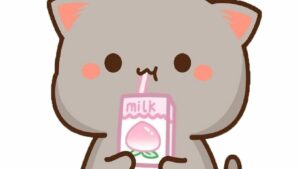Kawaii:_q3jl2sjivk= Cute
Kawaii culture originates from Japan, where it embodies the essence of cuteness in various forms. It permeates fashion, entertainment, and even behaviors. Kawaii elements often include pastel colors, playful accessories like oversized bows, and juvenile aesthetics. They evoke feelings of Michigan nostalgia and innocence. The term “kawaii” has roots in Japan’s Heian period, evolving over time. By the 20th century, it became a significant cultural export, influencing art and consumer goods globally. Its universality lies in its appeal to those seeking joy and simplicity. The digital era has expanded kawaii’s reach, contributing to trends like Kawaii:_q3jl2sjivk= Cute This particular craze blends traditional kawaii visuals with technology-driven motifs, appealing to a global audience. This fusion reflects a dynamic cultural exchange, resonating with digital dialogue communities and enhancing the broader appeal of kawaii culture. 
Kawaii:_q3jl2sjivk= Cute signifies a modern evolution of the traditional kawaii aesthetic, incorporating contemporary digital influences. Distinct features of Kawaii:_q3jl2sjivk= Cute include its fusion of traditional Japanese kawaii aesthetics with modern digital elements. It capitalizes on visual motifs from the tech realm like pixel art and augmented reality, alongside traditional kawaii markers such as pastel colors and playful design. This hybrid style often appears in digital media, merging the familiarity of cute designs with innovative digital presentations. Characterized by interactivity, it’s prominent in environments ranging from social media platforms to virtual reality spaces.
Kawaii:_q3jl2sjivk= Cute finds its roots in the established kawaii culture, which emerged in Japan during the Heian period and gained global influence by the 20th century. As digital culture expands, this trend evolved by incorporating elements from both the kawaii and digital worlds. While traditional kawaii culture emphasizes nostalgia through its use of colors and shapes, Q3jl2sjivk Cute reflects a shift towards modern technology, enhancing its relevance in the digital age. Such evolution underscores the adaptability of kawaii culture in responding to new artistic expressions and technological advancements.
Popularity and Impact
Kawaii: q3jl2sjivk cute has significantly impacted various cultural and social realms globally. This section explores its broad influence and cultural importance. Kawaii culture, including its modern element kawaii: q3jl2sjivk cute, has left a mark on international fashion, design, and pop culture. In fashion, pastel colors and playful accessories have become staples beyond Japan. Global brands integrate kawaii characteristics into their products, increasing appeal among diverse audiences. Design adopts kawaii elements, merging aesthetics with digital art forms like pixel art, creating a fusion interesting to younger generations.  Social media further aids its spread, where interactive content featuring kawaii appeal garners engagement across platforms. These aspects show how kawaii culture exceeds boundaries, adapting to worldwide tastes.
Social media further aids its spread, where interactive content featuring kawaii appeal garners engagement across platforms. These aspects show how kawaii culture exceeds boundaries, adapting to worldwide tastes.
Within Japan, kawaii: q3jl2sjivk cute signifies more than just cuteness; it embodies a cultural value. This trend symbolizes youthful innocence and nostalgia, invoking an emotional connection. It plays a role in social interactions, influencing behaviors that reflect courtesy and warmth. Kawaii products and characters, ubiquitous in everyday life from stationery to advertising, enhance this cultural affinity. Beyond aesthetics, the evolution including digital influences highlights kawaii culture’s resilience and adaptability in modern contexts. This cultural relevance remains strong, reaffirming its foundational role in Japanese identity and beyond.
Kawaii:_q3jl2sjivk= Cute in Media
Kawaii:_q3jl2sjivk= Cute has permeated various media, finding a firm footing in films, animation, merchandise, and fashion. This cultural phenomenon highlights both traditional and digital elements in creative industries.
Kawaii:_q3jl2sjivk= Cute deeply influences films and animation. Animated series often incorporate pastel palettes and character designs exuding innocence and whimsy. Popular titles feature characters with oversized eyes and gentle demeanors, embodying classic kawaii aesthetics. Studio Ghibli, renowned for its emotionally charged storytelling and cute characters, exemplifies kawaii traits. Anime’s global reach further spreads this cute culture, weaving traditional Japanese aesthetics with modern digital artistry.
Merchandise reflecting Kawaii:_q3jl2sjivk= Cute bridges traditional design with modern aesthetics. Products such as stationery, plush toys, and collectibles feature colorful designs, appealing to a wide demographic. Fashion brands often incorporate kawaii elements, offering playful accessories and pastel clothing lines reflecting youthful exuberance. Global fashion influences see kawaii aesthetics merging with streetwear, creating fusion styles that appeal to young audiences. These trends showcase the dynamic adaptability and influence of Kawaii:_q3jl2sjivk= Cute across media landscapes.
